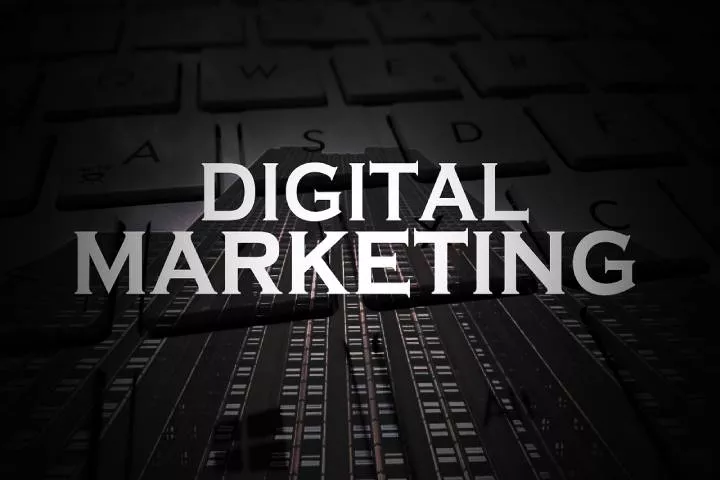Workforce
The Importance Of Backup & Disaster Recovery For Remote Workers
This is why it is important to update or create a backup and disaster recovery plan for your organization.

Businesses of all sizes have embraced remote work, and it is here to stay. For some organizations, this means full-time small teams, while others are adopting a more hybrid approach. Regardless of the form, remote work has increased productivity.
However, with the increase in productivity comes the challenge of security for remote work. The increasing disparate endpoints combined without the help of physical control can potentially leave vulnerabilities or malicious cyberattacks.
This is why it is important to update or create a backup and disaster recovery plan for your organization. Remember that 40% to 60% of small businesses will go out of business after experiencing a major data loss. Here are a few tips for creating your BDR plan.
1. Creating Your BDR Plan
Review Current BDR Plan: Before designing your BDR plan, review your existing policy. Your return time goals and recovery point objectives should be up to date. If not, begin from scratch by examining current staff distribution, general failure points, and important backup controls.
Prepare For Emergencies: In certain situations, employees may have emergencies that are beyond control. For example, an assistant may be forced to evacuate their home and remote workspace due to public emergencies like a natural disaster. Consider using Bug-out bags are a great option for these situations. Bug out Bags should include work devices, extra power supplies, cables, and other accessories that will help your employee feel less stressed about the emergency.
Backup Your Data: Data backups are critical to ensure better no data is lost during a disaster such as a data breach. It is ideal to have multiple locations automatically save your information. This might include keeping your work on the cloud or through company servers. While not all data requires this type of backup, it’s worth deploying to reduce the risk of data loss from essential projects.
Check out the resource below for more ideas on reducing the remote work risk and creating a BDR plan.

Infographic created by MXOtech
Technology
The Role of Advanced Control Systems in Enhancing Industrial Safety
In this blog post, we’ll explore the critical role of these switches in enhancing safety, dive into their real-world applications, and discuss the benefits they bring to various industrial settings.

In the world of industrial automation, safety isn’t just a priority; it’s a necessity. As industries increasingly embrace automation technologies, the focus on operator safety has intensified. Advanced control systems, particularly palm and foot switches, have emerged as essential tools in this safety-centric landscape.
In this blog post, we’ll explore the critical role of these switches in enhancing safety, dive into their real-world applications, and discuss the benefits they bring to various industrial settings.
Table of Contents
1. Elevating Safety with Ergonomic Design
Palm and foot switches stand out for their ergonomic design, tailored to minimize physical strain and maximize safety. In an industrial setting where precision and quick response are paramount, these switches offer a unique blend of comfort and functionality.
Palm switches, often mounted on machinery or workstations, allow operators to activate or deactivate equipment with a simple palm press. This design ensures that operators can react swiftly in critical situations, significantly reducing the risk of accidents.
Foot switches take this a step further by enabling hands-free operation. In environments where operators need to manage multiple tasks simultaneously, foot switches provide a vital safety net. They allow operators to control machinery while keeping their hands free for other essential tasks, thereby enhancing overall safety and operational efficiency.
2. Real-World Applications: Safety in Action
The real-world applications of palm and foot switches are vast and varied. In the automotive industry, for instance, assembly lines often integrate foot switches for tasks like pressing parts together or operating welding equipment. This hands-free control not only speeds up the assembly process but also ensures that operators can swiftly move away in case of malfunctions, safeguarding against injuries.
In the realm of manufacturing, palm switches are commonly used in equipment like press brakes or punch presses. By requiring an operator to use both hands to activate the machine, these switches prevent accidental activation, ensuring that hands and fingers are safely away from moving parts.
3. Beyond Safety: Enhancing Efficiency and Productivity
While safety is the primary benefit of palm and foot switches, their impact on efficiency and productivity cannot be overstated. By streamlining operations and reducing the physical effort required from operators, these switches contribute significantly to a more productive work environment. They not only safeguard the workforce but also optimize operational flow, leading to quicker turnaround times and higher output quality.

In industries where time is of the essence, such as packaging and logistics, the efficiency brought about by these ergonomic switches translates into a competitive advantage. They enable quicker response times, reduce operator fatigue, and contribute to a smoother, more efficient production line.
4. Adapting to Diverse Industrial Environments
The adaptability of palm and foot switches to various industrial environments is a key aspect of their design. These switches are not one-dimensional; they cater to a wide range of industrial applications. For instance, in the textile industry, foot switches are used to control sewing machines, allowing operators to adjust speed and function hands-free. Similarly, in the field of metalworking, palm switches are integral to ensuring precision and safety in equipment like hydraulic presses, where precise pressure application is critical.
This versatility extends to more specialized industries as well. In the pharmaceutical sector, where contamination control is essential, palm and foot switches offer a sanitary way to operate machinery without direct hand contact. Their robust construction also ensures they withstand the rigors of heavy industrial use, including exposure to dust, moisture, and extreme temperatures, making them reliable tools in virtually any industrial setting.
5. The Future of Automation: Integrating Smart Technologies
Looking ahead, the integration of smart technologies with palm and foot switches is set to revolutionize industrial automation. Imagine foot switches equipped with sensors that not only activate machinery but also gather data on usage patterns, helping to optimize workflow and maintenance schedules. Similarly, palm switches could incorporate touch-sensitive screens or biometric authentication for enhanced security and personalized settings.
These advancements would not only elevate the functionality of these switches but also contribute to the broader goals of Industry 4.0, such as increased automation, improved data exchange, and smarter manufacturing processes. The potential for these switches to integrate with IoT devices and cloud-based systems opens up a new realm of possibilities for remote monitoring and control, further enhancing safety and efficiency in industrial operations.
As we move into this new era of smart automation, the role of palm and foot switches will continue to evolve, underscoring their importance in the industrial landscape.
6. Moving Forward with Safety and Innovation
As industries continue to evolve, the integration of advanced control systems like palm and foot switches will become increasingly crucial. These tools represent the perfect blend of safety, efficiency, and ergonomic design, making them indispensable in modern industrial settings. For operators, they bring peace of mind; for businesses, they offer a pathway to enhanced productivity and a safer work environment.
The journey towards a safer and more efficient industrial world is ongoing, and technologies like palm and foot switches are leading the charge. Their role in safeguarding operators while boosting operational efficiency is a testament to the power of innovative engineering in the face of industrial challenges. As we look to the future, the continued adoption and evolution of these control systems will undoubtedly play a pivotal role in shaping the landscape of industrial automation.

 Instagram3 years ago
Instagram3 years agoBuy IG likes and buy organic Instagram followers: where to buy them and how?

 Instagram3 years ago
Instagram3 years ago100% Genuine Instagram Followers & Likes with Guaranteed Tool

 Business5 years ago
Business5 years ago7 Must Have Digital Marketing Tools For Your Small Businesses

 Instagram4 years ago
Instagram4 years agoInstagram Followers And Likes – Online Social Media Platform





















